
Coloradans shouldn’t pay for Xcel’s coal mistakes (Opinion)
In a shocking twist, the state of Colorado just sided with Xcel Energy and petitioned regulators to keep the Comanche 2 unit open past its retirement date scheduled for the end of the year to cover f
Opinion
Despite Bennet’s numerous endorsements, Weiser is the proven fighter (Letters)
Despite Bennet’s numerous endorsements, Weiser is the proven fighter Re: “Election 2026: Heavyweight bout,” Nov. 16 news story Just days after the hottest November day on record for Denver, Sunday’s Denver Post described Colorado’s two competing Democratic gubernatorial candidates as heavy hitters. While Attorney General […]
Letters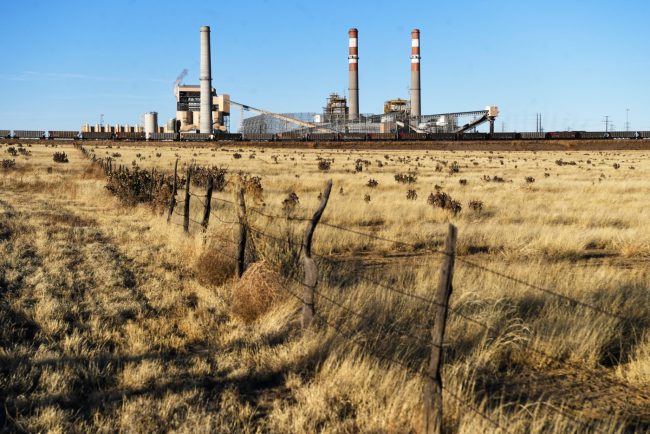
Coloradans shouldn’t pay for Xcel’s coal mistakes (Opinion)
Just last year, Colorado was leading the Mountain West in the transition from dirty coal plants to clean energy. Federal funding was assisting on rural clean energy while coal plant retirement dates were on track to meet the state’s critical climate goals. How quickly things […]
Columnists


I’m a proud Democrat and support our leaders pushing back on Republican power (Letters)
‘In support of Democratic leaders’ Re: “Colo. voters are dissatisfied with Democrats. Polis, Hickenlooper and Bennet can’t hide,” Sept. 14 editorial I disagree with your editorial. Democrats are not upset with Democratic leaders. If you only pay attention to Fox News, then yes, you would […]
Letters‘In support of Democratic leaders’
Re: “Colo. voters are dissatisfied with Democrats. Polis, Hickenlooper and Bennet can’t hide,” Sept. 14 editorial
I disagree with your editorial. Democrats are not upset with Democratic leaders. If you only pay attention to Fox News, then yes, you would think this. No one in my circle is upset with them, because they understand that Republicans have the power right now, which is making it difficult to fight back.
When I look beyond my circle at all of the protestors marching around the country, I see millions of us fighting back with signs, voices, and our feet. I don’t see anyone upset with Democrats to the level your editorial would suggest. Instead, I see people who want to help our Democratic leaders as they face impossible odds.
I am a proud Democrat in support of Democratic leaders.
Monta Lee, Littleton
Are you an extremist? A test
In today’s political climate, extremists are on both sides of the political spectrum. What is the common trait they share? They lack the willingness to compromise. They refuse to compromise the sanctity of their principles and values for the sake of working together to solve a festering problem.
Here’s a test:
• Are you willing to compromise your position on immigration?
• Are you willing to compromise your position on DEI?
• Are you willing to compromise your position on gun control?
• Are you willing to compromise your position on support for Israel and Ukraine?
• Are you willing to compromise your position on climate change?
If you answered “no” to any of these questions, you are part of the problem.
America was built on compromise. For over 200 years, Congress has solved problems to move forward. What happened to us?
Curt Anderson, Broomfield
The principle of humility underlies the constitutional guarantees of free speech and freedom of the press. Anybody, whether on the left or the right, who is unwilling to accept the possibility that their own views may be wrong, has no more than a shallow commitment to freedom of opinion and expression.
The founders of our country understood the danger of arrogant overconfidence. We can only hope that voters and those we elect will soon recognize that danger and the danger of diminishing our freedoms.
Paul Lingenfelter, Denver
We must leave a legacy of wildands
I am opposed to opening roadless areas to logging or other development, as they are of our last remaining untouched woodlands and wild areas. These should be saved for our grandchildren.
Some want to sell off public lands that belong to all American citizens. Perhaps they want to profit from the sale of lands that are not exclusively theirs. How can that be fair to the rest of us?
We already have visitor stress in some of our parks simply due to recreation demand. Look at Arches National Park in Utah and Rocky Mountain National Park in Colorado. As our population grows, there will be more demand for these rare and unique ecosystems. And that is why future generations will thank us for keeping them.
Wildlands are fleeting; we must preserve them.
Thanks for listening and supporting land conservation.
Joe Mollica, Glenwood Springs

The proven solution to school safety is arming teachers (Opinion)
Since 1999, hundreds of school shootings have scarred American communities, yet schools with armed staff have a perfect record: zero shootings. In an editorial this month — Colorado learned long ago that no school is safe from gun violence, a lesson Jeffco should have heeded […]
ColumnistsSince 1999, hundreds of school shootings have scarred American communities, yet schools with armed staff have a perfect record: zero shootings.
In an editorial this month — Colorado learned long ago that no school is safe from gun violence, a lesson Jeffco should have heeded — The Denver Post Editorial Board argued that while placing a law enforcement officer in every school poses significant financial challenges for school districts, they see no viable alternative.
The Denver Post described several benefits of having a School Resource Officer (SRO) on duty on every school campus. Beyond offering students law enforcement role models, the presence of a uniformed, armed defender on campus serves as a powerful deterrent to violence. Even the mere sight of a marked patrol car in a school parking lot can give would-be evildoers pause.
But it’s not a cure-all.
In Colorado’s Arapahoe High School Shooting in 2013, there was an SRO on the large campus. Although the shooter didn’t begin his attack near the SRO, the officer’s approach – heard by the shooter over the radio – helped limit the scope of the attack. One student, 17-year-old Claire Davis, was shot and subsequently died from her injuries. The SRO’s presence was instrumental in ending the attack before more lives could be lost or children injured. However, SROs are not a panacea, because they are human – they step away, eat lunch, or patrol large campuses, and their conspicuous presence makes them easy to avoid. There’s a better solution: armed, qualified school staff.
The Crime Prevention Research Center reports that none of the hundreds of schools nationwide with volunteer armed staff has experienced a shooting during school hours – a 100% success rate over decades. In Colorado’s 50 districts with armed, trained volunteer staff, including rural and suburban schools alike, safety records remain unblemished.
In these 50 districts, schools with armed staff have protection on site throughout the school day, thanks to the presence of multiple armed defenders. And they conceal carry. No one, aside from the security team, knows who they are. This adds an extra layer of protection for students and faculty, creating an environment where any attacker must contend with the likelihood of a rapid confrontation.
There are nearly 500 of these heroes in Colorado schools today. These volunteers are hand-picked, thoroughly vetted, and must commit to a rigorous training schedule. Critics worry about safety, but FASTER Colorado’s arduous vetting and training ensure only the most qualified carry concealed weapons. In 20 years, no armed staff program has reported a safety incident. In most communities, awareness that schools have armed staff reinforces the deterrent effect.
Although armed staffers continue to increase in numbers, why hasn’t the idea gained broader mainstream acceptance? At FASTER Colorado, we often hear that the media largely fail to share information that could raise awareness and interest in these programs. Reporters rarely highlight armed staff programs, leaving parents unaware of a proven remedy. Instead, headlines focus on tragedies and their painful aftermaths instead of prevention.
It’s time to spotlight the heroes quietly protecting our schools. Network and cable news rarely cover how widespread armed staff policies are, how safely these programs have been implemented across the country, or how some attackers may choose targets based on perceived security weaknesses. We also seldom hear the stories of the brave men and women working in schools, who willingly run toward the sound of gunfire to save children. That needs to change.
Imagine a teacher, coach, or counselor – someone your child trusts – who’s rigorously trained to protect lives, ready to run toward danger. That could transform our culture.
In Colorado, school boards hold the authority to approve armed staff in districts. Parents and communities must demand their school boards explore all options, including armed staff, to protect children. Share FASTER Colorado’s website and take an active role in creating a safer future for our students. Every day without action risks another tragedy.
Laura Carno is the executive director of FASTERColorado.org.
Sign up for Sound Off to get a weekly roundup of our columns, editorials and more.
To send a letter to the editor about this article, submit online or check out our guidelines for how to submit by email or mail.
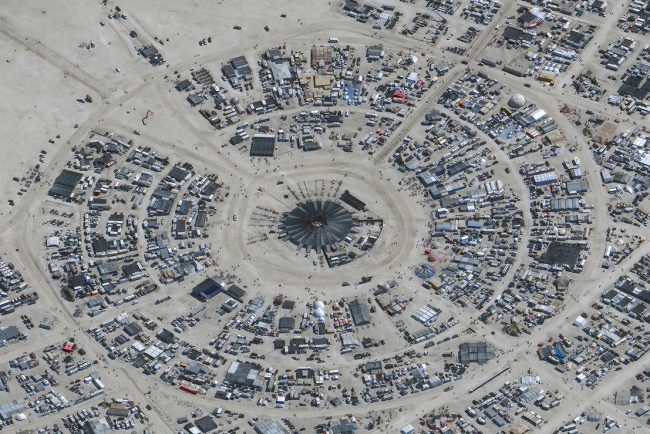
Burning Man, a bizarre tradition of the West, is global reunion of hope (Opinion)
Going into my 26th Burning Man, I admit I was crestfallen at the news that “Midnight Poutine” was not returning. The Canadian dish is a funny mix of fries, gravy and cheese curds, and it was always comforting to know that this culinary option was available, […]
ColumnistsGoing into my 26th Burning Man, I admit I was crestfallen at the news that “Midnight Poutine” was not returning. The Canadian dish is a funny mix of fries, gravy and cheese curds, and it was always comforting to know that this culinary option was available, starting back in 2009. No matter how peculiar, everything tastes great at midnight in the desert.
Because my mind lives in a spiral of political doom, it sped to: “Canadians hate America and they’re giving up on Burning Man.” Even worse, I thought, “The next thing you know, there won’t be a Swedish Meatball Camp.”
Still, this past August, 80,000 people converged in the Nevada desert to set up what aspires to be a peaceful global village. The hardest part of my years of being part of this temporary city is answering the question on my return: “How was it?”
All I can say is that it’s reunion for some, tribal for others. It would be a long voyage just to get intoxicated, dance and see some art. Perhaps there’s something hopeful to it that brings together thousands of people from all over the world.
In general, it is hot, dusty and increasingly rainy. The cheapest admission price is $550. Getting in and out of the instant town involves long waits and scary driving on Nevada State Route 447. Once there, you could feel right at home — or not.
Its origin story is that of founders Larry Harvey and Jerry James burning an effigy on San Francisco’s Baker Beach in 1986. That spontaneous whimsy outgrew the beach and ended up being planted in the dust of Nevada’s Black Rock Desert. Then, like a rhizomatous plant, its tentacles have spread, producing clones around the world. Smaller regional burns now mimic the original.
For crowd context, at least 15 college football stadiums seat more people than Burning Man’s giant campground. Of course, the football fans are only there for an afternoon while most Burning Man participants stay the seven days leading up to Labor Day. Other volunteers stay weeks after to clean it up to Bureau of Land Management permit standards, since the event takes place on public land.
There are all kinds of reasons to avoid Burning Man, and I get an earful every year. Even though “burning” is in the name, some hate the event for burning valuable resources. To partially address this, over the years event organizers have added composting toilets and solar to the mix. Burning Man poop will help gardens grow elsewhere. Most of the art pieces, other than the centerpiece “man,” are not burned. They live second lives at parks and town squares around the world.
The other question I hear every year is: “Is there crime at Burning Man?” The answer, unfortunately, is yes — traffic accidents and every kind of bad behavior you would see anywhere else. In 2005, I was the victim of an assault by a bicyclist who never stopped to see who he’d run over. It was bad. It was solved. The perp was convicted. It has not stopped me from returning.
This year there was also a rare birth, said to be completely unexpected, and a death of unconfirmed cause occurred at the time I left.
International attendance was up overall. I worked with photographers from Iran, Ireland, France and Belgium. The largest art piece on the playa was designed and constructed–inflated actually—by Ukraine. Its “Black Cloud” artwork was magnificent while it lasted, combining music and erratic bursts of light. Sadly, it succumbed to a 50-mph blast of wind.
In the midst of war, the Ukrainian artists thought Burning Man was one of the best ways to bring attention to their gallant and determined people, who have been fighting for survival since Russian troops invaded Ukraine in 2002.
There was also a 20-foot “(Expletive) You Elon” metal sculpture that seemed like a profane waste of energy. People mostly climbed around on it to take their selfies. And about that missing Canadian delicacy — were the Canadians especially anti-America? Some swear the poutine crew had just planned to take a year off. I’m looking forward to Midnight Poutine next year.
Dennis Hinkamp is a contributor to Writers on the Range, writersontherange.org, an independent nonprofit dedicated to spurring lively conversation about the West. He lives in Utah.
Sign up for Sound Off to get a weekly roundup of our columns, editorials and more.
To send a letter to the editor about this article, submit online or check out our guidelines for how to submit by email or mail.

Because of Charlie Kirk’s death, pro-life Americans must speak louder (Opinion)
Two years ago, I had the honor of sitting next to Charlie Kirk at a fundraising dinner. It was the first and only time I met him, and I was struck by his candor about what he was witnessing on college campuses. Having spoken on […]
ColumnistsTwo years ago, I had the honor of sitting next to Charlie Kirk at a fundraising dinner. It was the first and only time I met him, and I was struck by his candor about what he was witnessing on college campuses. Having spoken on campuses myself — long before Charlie was probably born — about pro-life issues and the harm abortion causes women, I knew the hostility one faces when daring to speak out on controversial topics. I was eager to hear what Charlie was experiencing.
He was candid and unapologetic. More Gen Z men, he explained, were becoming conservative, while more Gen Z women were increasingly hostile — particularly to his pro-life stance.
It made sense. Roe v. Wade had been overturned, and pro-abortion groups were reacting with hostility. Clinics were vandalized, pro-life organizations targeted, and activists urged the Biden administration to arrest grandmothers praying outside clinics. The stage was already being set for the dangerous narrative that “violence is acceptable when ideas are challenged.”
That evening, Charlie seemed tired but gracious. He told me he would head straight home after his speech to be with his wife and baby daughter. I could tell that was foremost in his mind. Yet he was still there, supporting a private Christian school, because raising children with biblical values and changing the culture mattered deeply to him.
When I was in my twenties, speaking about abortion in “free speech” zones at USC, UCLA, Cal State Long Beach, and other campuses wasn’t something I thought twice about. Even when hundreds gathered and campus police showed up, I had no fear of being shot for exercising free speech. Spit on? Yes. Screamed at? Absolutely. Shot? No.
Today, that has changed. We now see increasing use of government power against pro-life groups and Christians, particularly in states such as Colorado that have positioned themselves as abortion havens.
Just yesterday morning, Colorado’s House Minority Leader — a single mother of two — resigned, citing the hateful, toxic environment at the Capitol that mirrors the violence we see nationally. As the last Colorado Republican House Majority Leader in more than a decade, I have watched in horror as those elected to represent us are shouted down, gaveled out of order mid-debate, and labeled “hateful” for challenging issues like transgenderism. These debates matter because Colorado has slid to near the bottom in quality-of-life metrics over the past decade. The legislature is now a poster child for silencing dissent. And as increasingly militant voices in our culture have joined the ranks, the environment has become even more intolerant. Lobbyists tell me it is miserable to work there.
So, is it any wonder that while Charlie Kirk trained a new generation of leaders on campuses to respectfully debate the truths they believe — life, liberty, family and marriage — he would be targeted for it? His message was 180 degrees opposed to progressive ideologue professors who teach students that opposing speech is itself a threat and that violent responses are justified when their ideas are challenged. Like children plugging their ears and shouting “No, no, no,” only now it’s not tantrums — it’s bullets.
The gospel spread after the death of Jesus. His disciples picked up the mantle, even though those same forces wanted to kill them, too. That must be our example in light of Charlie Kirk’s death. We must continue speaking on college campuses. We must continue proclaiming the truth of life in the womb. We must continue helping women with unplanned pregnancies. And we must continue defending free speech at every turn — because warriors like Charlie Kirk showed us how.
Amy Stephens is the former Colorado House Majority Leader and works with Save the Storks in Colorado Springs.
Sign up for Sound Off to get a weekly roundup of our columns, editorials and more.
To send a letter to the editor about this article, submit online or check out our guidelines for how to submit by email or mail.
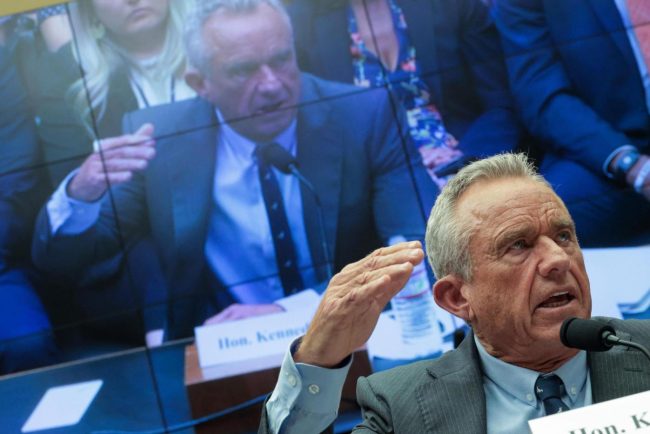
We cannot will away RFK Jr.’s bad science anymore than we can bad genetics (Opinion)
In the early 18th century a French zoologist, Jean-Baptiste Lamarck proposed a theory of so-called “soft inheritance” that predated Charles Darwin’s theory of evolution based on variation and natural selection. Lamarck believed that traits acquired during the lifetime of an individual organism can be passed […]
ColumnistsIn the early 18th century a French zoologist, Jean-Baptiste Lamarck proposed a theory of so-called “soft inheritance” that predated Charles Darwin’s theory of evolution based on variation and natural selection. Lamarck believed that traits acquired during the lifetime of an individual organism can be passed on to the next generation. Two examples were often cited: 1) a blacksmith develops strong muscles and his offspring spontaneously have natural strength; 2) giraffes strained their necks to reach ever higher leaves and progressively longer necks were passed along over generations.
In short, heredity advancement driven by desire. Lamarkianism considered evolution as a process that drives species toward ever greater complexity. Darwinian evolution assumes that random mutations happen all the time. Over time, the population accumulates mutations and sometimes one of them confers an advantage to the species. The advantage can be obvious (e.g., able to run faster to catch prey) or obscure (able to digest a previously indigestible food). Unlike Lamarck’s vision, this process is not directed to more complexity (i.e., intelligence). It simply improves the ability to successfully compete in the existing environment of the time and location.
Efforts to find support for Lamarck’s concept generally met with failure. In contrast, today there are many million individual pieces of evidence in every branch of biology, all of which support and none of which refute the essential correctness of Darwin’s theory. At this point, life theoretically evolved in the same sense that the water is theoretically wet.
By the 1930s the newly emerging field of genetics was growing in popularity, based primarily on the studies of the Austrian biologist and Catholic abbot Gregor Mendel. At about this same time a Ukrainian agronomist and scientist named Trofim Lysenko developed an odd, pseudoscientific version of Lamarckianism that he promoted in preference to the Mendelian concepts of heredity. Lysenko’s ideas appealed to then Soviet Premier Josef Stalin, who believed that concept of self-driven improvement was a better fit for communist doctrine than Mendelian heredity. Lysenko was appointed as the director of the Institute of Genetics of the Soviet Academy of Sciences.
Lysenko leveraged his newfound power to suppress Soviet geneticists’ opinions and to discredit and imprison them. His invalid hypotheses were thus elevated to the level of state-sanctioned dogma. Geneticists were fired from their posts and rendered ruble-less. Hundreds and possibly as many as thousands of scientists were imprisoned, and some were sentenced to death – denounced as enemies of the state.
Implementation of Lysenko’s policies predictably led to a massive famine that killed literally millions of Ukrainians. Turns out potatoes cannot will themselves to be more productive for humans. In 1958 the People’s Republic of China adopted neo-Lamaarckianism, culminating in the Chinese Famine of 1959 to 1961. I recall as a kid that if I failed to eat all of my broccoli, my grandmother would tell me there were people starving in China. She was right, but it was all on Lysenko…not me. Lysenko’s policies crippled agricultural science in the Soviet Union for decades.
Any of this ring a bell? At least Lysenko was actually a scientist, albeit a misguided one. We currently have an HHS Secretary in Robert F. Kennedy Jr. whose dissemination of misinformation about vaccines in the form of books, commentaries and public announcements is now too voluminous to quantify. He has no foundation in vaccine development, monitoring of vaccine safety, efficacy and impact, documentation of actual vaccine adverse events (as opposed to fantasy injuries) or any other aspect of vaccine technology.
Some of his personal attacks warrant lawsuits for slander. He is so far out of his depth it would take him years to swim down to the level of his competence. He has fired literally 1,000’s of HHS employees, one assumes because they were actually trying to perform the jobs they were hired to do. He fired the Centers for Disease Control director, Susan Monarez, for refusing to promote directives that she knew were scientifically unsupportable.
Several other high-level CDC executives also resigned in solidarity. Carolyn Leavitt, White House Press Secretary and professional sycophant, defended the move because any member working in the federal government who disagrees with the president’s agenda should be “shown the door.” Susan Monarez and the scientists who followed suit are heroes. Billboards praising them to the heavens should be erected in every major city in the country. Thank heavens scientific integrity is still alive and well.
The impact of Elon Musk’s arbitrary DOGE cuts is palpable. I recently attended an international conference (on my own dime) where the low attendance by American scientists, particularly young scientists, was obvious. American colleagues who were able to attend invariably had horror stories to tell. Multi-year studies were interrupted and often unrecoverable, loss of support personnel to manage animal facilities and lack of resources to purchase mice, inability to purchase routine critical supplies and equipment. This has disabled U.S. public health to an unprecedented extent; international science will still progress, but the preeminent position enjoyed by the U.S. for more than a century could be sacrificed for good.
And all of this was directed by a person with zero interest in science, much less public health.
We cannot will away nonsense science like Kennedy’s or Lamarck’s any more than a giraffe can will its neck longer or a father make his kids stronger by lifting weights, so we must stand up to the bullies and fight for America’s scientific community.
D. Scott Schmid is an associate professor of molecular, cellular, and developmental biology at the University of Colorado.
Sign up for Sound Off to get a weekly roundup of our columns, editorials and more.
To send a letter to the editor about this article, submit online or check out our guidelines for how to submit by email or mail.

Aging Aztlan Theatre finds new life with dance and ambient music
Editor’s note: This is part of The Know’s series, Staff Favorites. Each week, we give our opinions on the best that Colorado has to offer for dining, shopping, entertainment, outdoor activities and more. (We’ll also let you in on some hidden gems.) One of my […]
OpinionEditor’s note: This is part of The Know’s series, Staff Favorites. Each week, we give our opinions on the best that Colorado has to offer for dining, shopping, entertainment, outdoor activities and more. (We’ll also let you in on some hidden gems.)
One of my homes away from home this year was the Aztlan Theatre in the La Alma-Lincoln Park neighborhood.
The theater’s owners, Timeo and Aurora Correa, screened movies in English and Spanish there in the 1970s and later opened it up for national touring acts as raucous as the Red Hot Chili Peppers. These years, they’ve struggled to pay escalating property taxes as the neighborhood around the venue is redeveloped.
The stoic Aztlan is empty most days, decades of wear and tear chipping away at it from the outside in. For now, Denver’s electronic music community has found it to be an optimal space to showcase artists both legendary and cutting-edge through a series of mesmerizing live performances.
A collective called Caracol Productions, which includes Denver resident Anna McGee and sound engineer Luke Thinnes, has booked and promoted the shows in an effort “to bring together Colorado’s music community in this storied venue, which is in danger of being lost forever to gentrification and related exorbitant property taxes,” according to its website. Caracol’s love for the venue — it’s referred to on the site as a “priceless jewel in our city” — is evident, as is that of the mostly young people who show up with their friends for a night of dancing and mingling over smoke breaks.

Ambient and dance music occupy two sides of the same coin. They encourage deep listening and can inspire both introspection and outward expression, depending on your state of mind. They are bridges to experimental music, where stronger textures and more challenging artistic statements are explored.
Laraaji is an elder statesman of modern ambient music. This winter, he graced the stage of the Aztlan surrounded by his instruments. The crowd wiggled to the music with abandon.
I felt a bit silly when I first got there, sitting down on one of the few rows of seats that remained in the back, but it was cold and I was tucked into my jacket. I took in the inside of this old theater I’d never been in before, awestruck by how vast it appeared in the darkness as playful melodies reverberated against the massive walls.
It was like standing in the middle of the open desert, watching the stars light up and my existential worries wind down. This was a place where I could surrender myself, in the sense defined by London artist and forever-crossword clue Brian Eno, “a sort of active choice not to take control.”
Dancing, to me, is surrendering. This summer, Caracol and Denver DJ Mitch Smith threw a party at the Aztlan with two techno DJs, PLO Man and Arthur. Refracting lasers beamed overhead as the pair mixed vinyl records back and forth, turning the theater into an ecstatic dance floor for the night.
In August, KGNU Community Radio, whose studios used to be near the Aztlan, occupied the venue with a hefty lineup of DJs and vendors for a fundraiser. Caracol also puts local spinners and artists on the bill.
More opportunities to dance inside the Aztlan are coming. Martin Rev, of the synth-punk band Suicide, is headlining Oct. 10 with support from Scottish producer Fergus Jones. (Caracol is presenting the show with KGNU.)
Caracol’s final headliner of the year is the same as its first, as Laraaji (the artist is known by just one name) returns to cap its concert series Oct. 17.
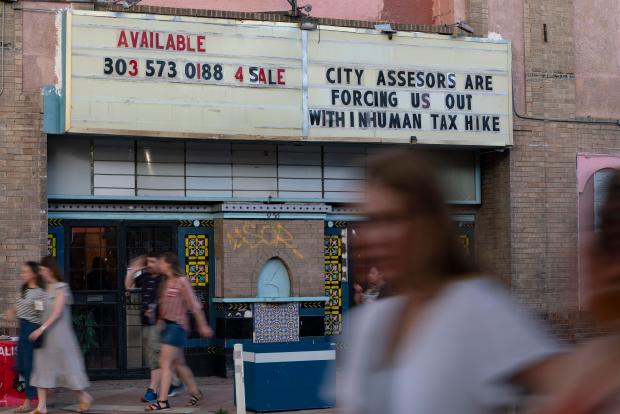
A few months after the first Laraaji show, I returned to the Aztlan to see an artist who also meant a lot to me and a cohort of music fans along the Front Range: Jan Jelinek, a German electronic musician whose best known work cut up jazz records and threw them under a microscope.
Here, in the middle of the descending theater floor and surrounded by an intimate circle of seated spectators, Jelinek manipulated the high, rounded pitches of a modular synthesizer to resemble the whistle of a dropping bomb. The Aztlan Theatre’s faded glory reflected that sound of imminent collapse.
Timeo and Aurora stood bar, as they did during the other shows. Concertgoers fluttered around the building, staying away from the barricaded stairs leading up to the upstairs balcony, which is inaccessible. They ordered from the mobile pizza shop that set up its oven out front.
The future of the theater, Aurora has said, rests on Timeo. This was before the Denver Broncos announced its intention to move into the neighborhood. There is an active GoFundMe raising funds on behalf of the theater.
I wondered what they thought of the doom and gloom that emanated from the speakers. They kept busy selling drinks.
The Aztlan was the artwork that night, the brutalist music and glow of strategically-placed lights imploring me to poke into the nooks and crannies of this theater that in 2027 will turn 100 years old.
Thankfully for now, it’s still standing.
The Aztlan Theatre is at 976 Santa Fe Drive, Denver. Visit caracolprod.square.site for tickets to upcoming shows.

No one talks about it, but there is one simple way to save Social Security — the wealthy pay more (Letters)
Eliminate the income cap for Social Security Re: “Social Security: Americans’ top asset isn’t a home or stocks,” Sept. 14 business story The article deals with the future insolvency of Social Security, predicting it could happen as soon as 2033. I have read several articles […]
LettersEliminate the income cap for Social Security
Re: “Social Security: Americans’ top asset isn’t a home or stocks,” Sept. 14 business story
The article deals with the future insolvency of Social Security, predicting it could happen as soon as 2033. I have read several articles dealing with this issue. They deal with different scenarios, such as, raising the interest that is currently charged, or reducing the amount recipients receive, etc.
One possible solution, that never seems to be brought up, is the income cap. Currently, everyone pays into the fund up to an annual income of $176,100, so anyone making that amount or less, pays based on 100% of their income. Anyone making over that amount pays no additional tax.
If the maximum payout were kept the same, and everyone payed into the fund based on 100% of their income, the fund would most likely remain solvent. The assumption here is that people making over $176,000 per year can just as easily afford to pay their fair share.
— Steve Nash, Centennial
Needless COVID vaccine scare points to need for civics
Re: “FDA reviews reports of COVID vaccine deaths,” Sept. 14 news story
The headline regarding COVID deaths for people under age 18 is alarming for no good reason. A quick browsing of the paper might lead one to rethink the safety of the vaccine. The facts in the article (1,800 deaths from COVID infection and 80 deaths from vaccine) indicates that a child would be 22x more likely to die of the illness than from the vaccine.
We need a return to sanity and to peer-reviewed science. We need RFK out of government. We need health research that works to solve real problems, not to rehash old, mistaken theories.
We need a citizenry schooled in civics and critical thinking, starting at an early age, and continuing through high school. And just as we are required to renew our driver’s licenses, we should renew our knowledge on these subjects every 5 years. AARP has a safe driving class for seniors, which gives you a discount on auto insurance, when completed. We could have civics training, developed by respected centrist experts, that gives you a rebate on taxes when completed.
— Nancy Litwack-Strong, Lakewood
Celebrate two amazing Coloradans
Re: “Rifle resident receives Carnegie Medal for Heroism,” and “Mom’s book on daughter with Down syndrome turning 20,” Sept. 14 news stories
Thank you for the inspiring stories of Alec Larson and his rescue of a woman and her child. He is also a hero due to his speaking out to protect children from drug overdose which his daughter died from.
The mom who wrote the book about her daughter, Eliza Woloson, and her daughter Isabelle was beautiful, she is also a hero that raised an amazing young woman with a degree, adult independence and two jobs! Wow! Amazing!
— Dee Walworth, Brighton
Ready for long lines at polling places?
It is not clear what President Trump means by eliminating mail-in ballots. I can only surmise that this requires in-person voting at polling locations. I trust everyone is ready to stand in a long line come Election Day or during early voting.
Full elections incorporate a multipage ballot with not only all the candidates and positions for one to select but multitudes of special propositions, new laws and extra items to vote on.
In the last major election, I took 20 minutes to fill out my ballot, and that was after I fully researched statements in the “Bluebook” and newspaper and television editorials.
Imagine the time it will take a lot of people to fill out their ballot while in that tiny privacy booth.
For many, it might be the first time they try to understand the wording on all the upcoming options that we will likely have the privilege to vote on. Plus, add the extra time at polling stations to check our ID card.
How about this: Send me my ballot in the mail. I can fill it out at home then drive to a polling location and drop it off after showing my ID. Or will this also be classified as voter fraud? One thing is for sure, at least in my case, I will need no time to figure out which candidates to vote for, this time: NO REPUBLICANS. Easy, no time wasted.
— Richard Reiff, Pueblo
Sign up for Sound Off to get a weekly roundup of our columns, editorials and more.
To send a letter to the editor about this article, submit online or check out our guidelines for how to submit by email or mail.
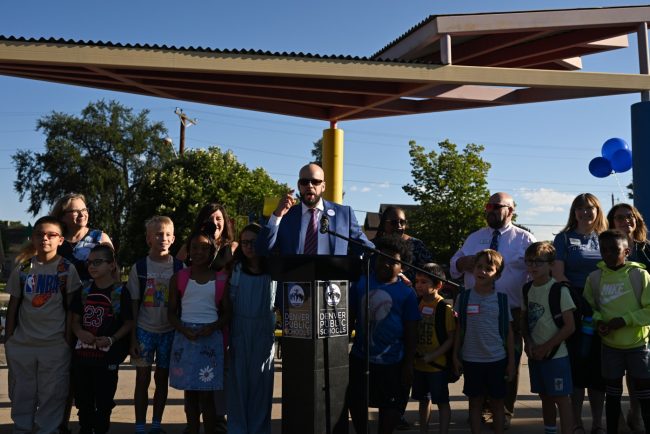
DPS test scores improved, but disturbingly confirm persistent inequalities (Opinion)
Denver Public Schools recently released state assessment scores for around 55,000 students who participated in CMAS and SAT testing, claiming, “… the district is making a real difference for all of our students.” Digging into the data (as EDUCATE Denver and other civic leaders did […]
ColumnistsDenver Public Schools recently released state assessment scores for around 55,000 students who participated in CMAS and SAT testing, claiming, “… the district is making a real difference for all of our students.” Digging into the data (as EDUCATE Denver and other civic leaders did recently with an independent data analyst), a more nuanced story unfolds.
It is a proverbial “tale of two cities.” One plot line reveals that approximately three quarters of DPS white students are proficient in reading, outscoring their Colorado peers by 17 points. A parallel tale suggests that of Black, Hispanic, and low-income students who 70% or more are not proficient in reading and, in contrast to their white peers, underperform similar students statewide.
These same terrible patterns hold true in math, where over 80% of Black and Hispanic students perform below grade level and behind peers statewide. We are not making a “real difference” for most of our kids as 65% of students are Black or Hispanic. In fact, the long-term trend suggests that, for many, the situation is only getting worse.
The data is even more confusing. Over three years, test scores for all student groups went up. Up is good and we credit DPS, generally, for this trend. However, when you put the starting line at 2019, scores have just now surpassed pre-pandemic levels for DPS white students, while scores among DPS Black and Latino students are still recovering on most metrics. There is nothing exceptional about the recent rise – we are merely back to where we started, for some.
/*! This file is auto-generated */!function(d,l){“use strict”;l.querySelector&&d.addEventListener&&”undefined”!=typeof URL&&(d.wp=d.wp||{},d.wp.receiveEmbedMessage||(d.wp.receiveEmbedMessage=function(e){var t=e.data;if((t||t.secret||t.message||t.value)&&!/[^a-zA-Z0-9]/.test(t.secret)){for(var s,r,n,a=l.querySelectorAll(‘iframe[data-secret=”‘+t.secret+'”]’),o=l.querySelectorAll(‘blockquote[data-secret=”‘+t.secret+'”]’),c=new RegExp(“^https?:$”,”i”),i=0;i<o.length;i++)o[i].style.display="none";for(i=0;i<a.length;i++)s=a[i],e.source===s.contentWindow&&(s.removeAttribute("style"),"height"===t.message?(1e3<(r=parseInt(t.value,10))?r=1e3:~~r<200&&(r=200),s.height=r):"link"===t.message&&(r=new URL(s.getAttribute("src")),n=new URL(t.value),c.test(n.protocol))&&n.host===r.host&&l.activeElement===s&&(d.top.location.href=t.value))}},d.addEventListener("message",d.wp.receiveEmbedMessage,!1),l.addEventListener("DOMContentLoaded",function(){for(var e,t,s=l.querySelectorAll("iframe.wp-embedded-content"),r=0;r<s.length;r++)(t=(e=s[r]).getAttribute("data-secret"))||(t=Math.random().toString(36).substring(2,12),e.src+="#?secret="+t,e.setAttribute("data-secret",t)),e.contentWindow.postMessage({message:"ready",secret:t},"*")},!1)))}(window,document);
There is a glimmer of promise when we observe growth scores. These scores reflect performance relative to an expected amount of learning for any given school year, based on typical performance of similar students the previous year. For most DPS subgroups, growth was slightly higher relative to state peers. But there, again, the group that is growing fastest is white students. Most minority students are not growing as much as peers or quickly enough to ever achieve grade level proficiency. Unless DPS can radically accelerate growth rates for historically underserved students, the nearly 50 point achievement gap between white students and students of color will only expand.
It is worth noting that DPS’ actual performance bears no relationship to the wildly unrealistic targets proposed by the superintendent and approved by the school board in January. DPS set strategic targets for minority student subgroups between 10 and 20 points higher than those actually achieved. This failure is not surprising as DPS did not articulate a realistic plan for lifting up the achievement of chronically underperforming groups. It is surprising, however, in the context of DPS’ stated success.
We celebrate the fact that some schools in the district are defying their “demographic destiny.” As measured by test scores, students of color are better served by charter schools than by district-managed schools, and some DPS charter schools have made great headway in closing the gap. There are also some district-managed schools exceeding the odds, which begs the question: What steps is DPS taking to identify and scale strategies that work?
As members of EDUCATE Denver, we invited the superintendent to speak to a forum of community members to find out. We were interested in learning about DPS’ bright spots, challenges, course corrections and efforts to leverage best practice. The Superintendent declined the invitation, refused to send a delegate, and countered that the district would hold its own forum next year – a decision we certainly hope was not motivated by the upcoming Board of Education election this November.
When test scores were publicly released in August, the district celebrated recent gains without putting them into proper perspective. Community members deserve a fuller picture, which we attempt to provide here:
With a budget of $1.5 billion and just over 90,000 students, DPS spends $11,452 per student each year. According to the data, less than one in two students are proficient in literacy and fewer than one in three students are proficient in math. Shareholders (taxpayers) of any other $1.5 billion organization would demand a complete overall of such a failing institution. (In the case of a $1.5 billion public entity whose core business is students’ futures, a more practical solution is to follow the evidence.)
So, what now? Schools and programs in DPS that are closing the achievement gap between white and minority students should be replicated urgently in other schools across the district. In addition to studying the high performers in our midst, DPS should dive into the extensive body of research that exists to identify promising practices around the country. What they will find is that higher performing school districts not only have ambitious goals; they have detailed plans to achieve them. They have leaders who talk to, and work with, their communities. They have school boards who maintain focus on student learning and monitor that plans are executed.
There is no question that DPS teachers, staff and students are working hard, but they need more direction and support. The citizens, taxpayers, and voters of Denver need to express their desire for clear goals from the school board and coherent strategy from the superintendent. It is well past time for serious conversations about the structural issues plaguing Denver Public Schools. It is our only hope for a “tale of one city” in which all children learn and thrive.
Federico Peña is a former mayor of Denver and an EDUCATE Denver member. Rob Stein is a former superintendent of the Roaring Fork School District, a former principal of Manual High School and a member of Educate Denver.
Sign up for Sound Off to get a weekly roundup of our columns, editorials and more.
To send a letter to the editor about this article, submit online or check out our guidelines for how to submit by email or mail.

Krista Kafer: Don’t use Kirk’s death to silence speech, even the gross speech endorsed by a Cañon City councilwoman
After the murder of conservative activist Charlie Kirk, Cañon City Councilwoman Emily Tracy posted to her personal Facebook page a link to an opinion piece entitled “Charlie Kirk’s Legacy Deserves No Mourning.” The piece criticized Kirk’s past comments about women and minorities, concluding with the words: “I […]
ColumnistsAfter the murder of conservative activist Charlie Kirk, Cañon City Councilwoman Emily Tracy posted to her personal Facebook page a link to an opinion piece entitled “Charlie Kirk’s Legacy Deserves No Mourning.” The piece criticized Kirk’s past comments about women and minorities, concluding with the words: “I won’t celebrate his death, but I’m not obligated to celebrate his life, either.”
Posting an article, even without a positive comment, signals agreement, but there is nothing in this piece, harsh and partisan as it is, condoning Kirk’s death. Nevertheless, the Cañon City Council voted to draft a censure motion after an irate crowd demanded the councilwoman’s removal.
If anyone should be censured, it is any public official who uses this tragedy to punish political opponents. Rather than kowtow to vengeful mob sentiment, Cañon City council members should dismiss the censure resolution when they meet again in October.
Also, former state House Minority Leader Rose Pugliese should rethink her post calling for the governor to fire Jazmin Murguia, a suicide prevention coordinator for the Colorado Department of Public Health. Murguia’s profanity-laced social media post criticized people for expressing grief about the conservative firebrand while remaining silent about other tragedies. Abrasive, even hateful, the post nevertheless did not in any way rejoice in Kirk’s murder. Unless she is exhibiting partisan bias in her social work practice, her job should not be threatened. The same goes for teachers who have been suspended for posting criticism of Kirk or his supporters.
There is a difference between lauding the murder of an innocent human being and criticizing the victim’s opinions and statements, between condoning violence and suggesting the public outpouring of grief is selective or disproportionate.
As long as there are politicians who seek to lower flags or have Kirk’s body lay in state, there will be those who react strongly, if sometimes tactlessly, to these actions. Lionizing the deceased as a martyr will likewise. When people like Rep. Troy Nehls, R-Texas say, “If Charlie Kirk lived in Biblical times, he’d have been the 13th disciple,” I have to respond to my errant Christian brother, “WTF dude, have you no shame?” (For those looking to cancel this column, WTF is short for “withstand thoroughly faulty hermeneutics”).
Kirk was an influential activist and commentator who successfully launched a conservative youth movement and whose tragic death is understandably grieved by those who knew and admired him. Even so, he is not an appropriate candidate for canonization.
Some public officials have bigger plans for using Kirk’s death to silence those with whom they disagree. In addition, to urging listeners to call employers of people they think are “celebrating Charlie’s murder,” Vice President J.D. Vance said on a recent podcast the government should use its power to target liberal organizations starting with the Ford Foundation and the Open Society Foundations.
Attorney General Pam Bondi said the administration would “go after” those engaging in “hate speech.” She backpedaled her remarks after backlash from pundits right and left. Her boss did not give ground, however. When asked by a reporter about Bondi’s comments, President Donald Trump said, “We will probably go after people like you, because you treat me so unfairly, it’s hate.”
FCC Chairman Brendan Carr threatened on a podcast to withdraw ABC’s broadcasting license after late-night television host Jimmy Kimmel said that “the MAGA gang” was trying to characterize the murderer “as anything other than one of them” and trying to score political points. The first assertion is wrong. Kimmel’s show was then canceled. I don’t watch late-night television but found the FCC’s threats chilling. The government should not be dictating network content.
Of course, the Trump administration is not the first to use an act of violence as a pretext to attack free speech rights. Others have tried. If successful, Democrats will be the first to lose their rights, but Republicans will follow. The next unethical president on the left will happily use whatever government bludgeon this administration fashions to pummel the right.
Krista Kafer is a Sunday Denver Post columnist.
Sign up for Sound Off to get a weekly roundup of our columns, editorials and more.
To send a letter to the editor about this article, submit online or check out our guidelines for how to submit by email or mail.

Brazil’s version of Trump — Jair Bolsonaro — is headed to jail (Letters)
Brazil’s version of Trump is headed to jail Re: “Brazil: After official’s conviction, Congress already considers granting amnesty,” Sept. 15 news story Such outstanding news. Brazil’s Supreme Court convicted Jair Bolsonaro of the crimes involved in his violent coup attempt, by an overwhelming majority. Brazil’s […]
LettersBrazil’s version of Trump is headed to jail
Re: “Brazil: After official’s conviction, Congress already considers granting amnesty,” Sept. 15 news story
Such outstanding news. Brazil’s Supreme Court convicted Jair Bolsonaro of the crimes involved in his violent coup attempt, by an overwhelming majority. Brazil’s legitimate President Lula da Silva responded to further threats from Marco Rubio with dignity and intelligence, in defense of their independence and sovereignty. Yes, Brazil put their version of Trump in jail, it’s a shame our Republican Party only pays lip service to actual law and justice, but it’s hard to stand up to crime when you’re serving a convicted criminal.
Thomas Holzfaster, Lakewood
Better than logging, revive the Small Tracts Act
Re: “Hidden in Trump’s law is mandate to strip big trees from national forests,” Sept. 4 commentary
For whatever nefarious reason President Trump has for selling off timber in the national forests, there can be better ways of accomplishing wildfire and proper thinning of trees, plus increased improved husbandry of the forests. However, it would result in fewer brownie points with rich constituents.
Back in 1983 there was an act called the “Small Track Act.” It was originally designed to settle disputes over land boundaries with the forest service and private owners whose land abutted the national forest. Small tracts of national forest land were to be sold off to private owners at a reasonable cost. It had a couple of unintended benefits. One that the private owners would be more involved in the care of those tracts than would the federal government and forest service with the thinning and upkeep of those tracts and the forest service would benefit from those funds received from the sales.s
I’ve had my application in and sat on that list since early 2002. Nobody that I’ve spoken with at the Forest Service knew anything about the list or the program.
If the program were dusted off and reinstituted, it would go a long way toward solving not all, but many problems in our forests.
Jim Lynch, Northglenn
Ready for long lines at polling places?
It is not clear what President Trump means by eliminating mail-in ballots. I can only surmise that this requires in-person voting at polling locations. I trust everyone is ready to stand in a long line come election day, or during early voting.
Full elections incorporate a multi-page ballot with not only all the candidates and positions for one to select, but multitudes of special propositions, new laws and extra items to vote on. The last major election I took 20 minutes to fill out my ballot, and that was after I fully researched statements in the “Bluebook” and newspaper and television editorials. Imagine the time it will take a lot of people to fill out their ballot while in that tiny privacy booth.
For many, it might be the first time they try to understand the wording on all the upcoming options that we will likely have the privilege to vote on. Plus, add the extra time at polling stations to check our ID card.
How about this: Send me my ballot in the mail, I can fill it out at home, then drive to a polling location and drop it off after showing my ID. Or will this also be classified as voter fraud? One thing is for sure, at least in my case, I will need no time to figure out which candidates to vote for, this time NO REPUBLICANS, easy,…. no time wasted.
Richard Reiff, Pueblo
Medical aid in dying is truly compassionate
I have a unique perspective on medical aid in dying (the term physician-assisted suicide is cruel and inappropriate). I am a retired physician who practiced in Oregon for 35 years, half of which was before and half after the passage of the Death With Dignity Act. The Colorado End of Life Options Act is a mirror image of the Oregon law.
I had several patients with end-stage cancer both before and after the Oregon law passed, and I experienced what their final days were like. Although I approved of the law, I didn’t actively participate in the process. Rather, I referred my patients who wanted to explore this option to physicians who were skilled in educating and counseling appropriate patients in the details. Not all of them chose to proceed after learning about the process.
I had one patient, a friend, with end-stage pancreatic cancer who asked if, as a friend, I would be present when he took the medication. He was surrounded by family and a few close friends and it was one of the most beautiful and spiritual deaths that I ever experienced.
I also experienced the death of a loved one, my mother, who had cancer. She had gone through the medical aid in dying process and had obtained the prescriptions. But she never chose to use them. I know that just having the option gave her comfort and a deep sense of control. The statistics from Oregon show that about 1/3 of those who obtain the prescriptions never use them.
Using medical aid in dying is a “choice” that is not appropriate for everyone, but should be available as an option for those who qualify under the law. Those of us who live in Colorado are the fortunate ones to have this “choice” and any efforts to reverse this law are cruel and inhumane.
John R. Lobitz, Denver
Sign up for Sound Off to get a weekly roundup of our columns, editorials and more.
To send a letter to the editor about this article, submit online or check out our guidelines for how to submit by email or mail.

